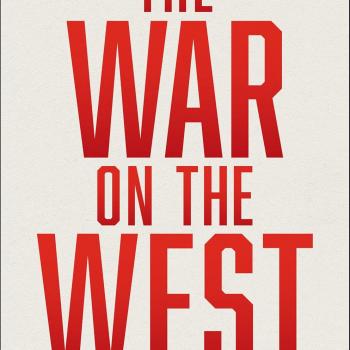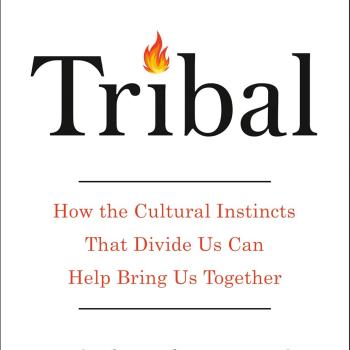Women missionaries often feel marginalized. They are theologically equal but strategically separate in many circles. We identified recent expressions of this problem in a previous post. So now, how do address it?
This post lays the groundwork for answering that question. It shows how unconscious assumptions and fears lead to different interpretations about key verses concerning women in ministry.

Nothing is more practical than perspective. Likewise, in this case, nothing is more influential on strategy than our interpretation of Scripture. Many ideas unconsciously shape our reading of the Bible. A few basic assumptions underlie our decisions to emphasize a certain text or judge it (un)clear.
For example, consider 1 Tim 2:12,
“I do not permit a woman to teach or to exercise authority over a man; rather, she is to remain quiet.”
Scholars have published countless word studies to explain the meaning of “teach” and “exercise authority.” Unfortunately, these books and essays reach contrary conclusions. (By the way, the 和合本 (CUV) uses 讲道 (“preach”), which only complicates the problem.)
Maximal Marginalization
Given the conflicting arguments, a more basic hermeneutic question affects us. Are we prone to a maximalist or a minimalist interpretation? What’s the difference? People differ about what can be assumed amid the silence.
A maximalist expands the meaning to concern a broad range of potential applications. Thus, “teaching” in 1 Tim 2 not only includes pastoring. It also include as academic instruction, guest preaching, teaching Sunday school classes in which men attend, and/or even women serving in strategy roles on the mission field.
A minimalist seeks to limit how much (s)he infers from a passage. Silence and/or ambiguity make space for conscience and creative solutions. One minimalist reading of 1 Tim 2:12 claims Paul’s wording (teaching, exercising authority) alludes to the role of a pastor. A minimalist first seeks to identify what is most clear or enduring (i.e. not simply due to the circumstances of history and culture). These observations provide minimum criteria to eliminate speculation.

Therefore, minimalist interpreters will emphasize the logic of Paul’s argument. Verses 13–14 explicitly ground Paul’s exhortation:
“For Adam was formed first, then Eve; and Adam was not deceived, but the woman was deceived and became a transgressor.”
Paul appeals to God’s creation of Adam and Eve, which precedes the fall of Gen 3. As a result, minimalists have an anchor limiting potential interpretations.
Only then will they consider other important but less decisive factors. For instance, this minimalist view of 1 Tim 2 is partly based on the immediate context. Chapter 3 discusses qualifications for elders and, with reference to deacons, distinguishes men from women/wives.
“Context is king” is foremost among interpretive principles. This phrase doesn’t mean “context” is unambiguous. But it is a plum-line for judging what interpretations best fit the biblical and historical context.
Led by fear?
Both approaches attempt to “play it safe.” Each sees itself as “conservative.” Neither wants to go beyond the text. They differ in how they handle silence.
Arguments from silence are inherently weak. We can argued nearly anything from silence. Sadly, too few people explicitly acknowledge “silence” and how it affects or limits their viewpoint.
I’m suspect maximalist interpretations stem from fear. They fear being wrong as if the Bible were always sufficiently clear on any given topic; if they misread the text, God would be upset. Maximalist limit how one’s conscience makes decisions.
Minimalists are not flippant with the text. Rather, they do not want to go beyond what Scripture teaches. We do not respect the Bible by claiming to speak authoritatively about something which Scripture is silent. It’s best to minimize assumptions based on silence.
Someone might say that a more restrictive reading builds from a network of implications between individual passages with a result that the sum is greater than the parts. That could be true if it were not for the fact that adding Bible verses only adds to the ambiguity (e.g., 1 Cor 11:5). The additional ambiguity reinforces the need for a minimalist reading.
We can reframe the distinction in this way. Maximalist fear cultural syncretism, where culture relativizes one’s theology. Minimalists are wary of cultural syncretism; yet, they are just as concerned with theological syncretism. That is, minimalists do not want to limit the Bible’s message to a narrow spectrum of topics and applications.
Reinterpreting Women’s Roles in Ministry
These two ways of interpretion drastically affect how we understand key texts concerning women in ministry. Let’s admit it–– whatever your position on women’s roles, it is not “obvious” as if someone called “red” what others call “blue.”
What does Paul mean when saying “the women should keep silent in the churches. For they are not permitted to
“the women should keep silent in the churches. For they are not permitted to speak, but should be in submission, as the Law also says…For it is shameful for a woman to speak in the church” (1 Cor 14:34–35)?
After all, women are able to prophesy in Acts 21:9; 1 Cor 11:5.
Maximalist interpretations are prone to marginalize women’s roles in ministry. However, as I’ve shown, a minimalist reading is not boundless relativism. A minimalist simply acknowledges the relative strength or weakness of various perspectives. It attempts to respect Scripture’s silence.
In my next post, I’ll highlight a few potential applications for women serving as missionaries.

















